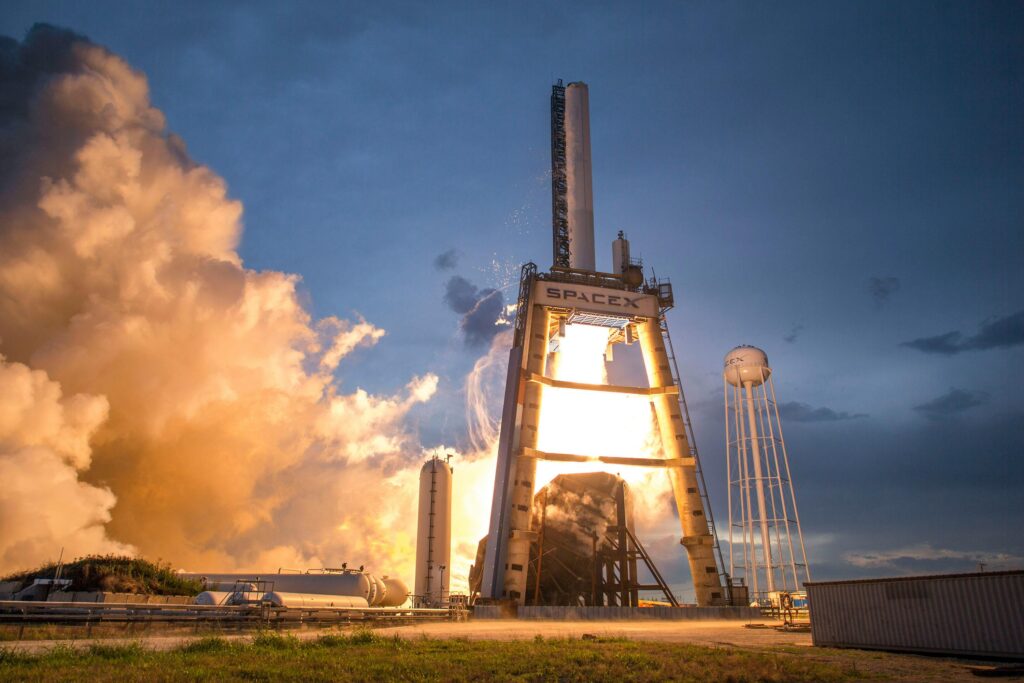SpaceX’s Revolutionary Rocket Booster Return: Ushering in a New Era of Reusable Space Technology
In the last decade, SpaceX has redefined space exploration, pushing boundaries with the vision of making space more accessible. One of its most impressive achievements, the successful return and reuse of rocket boosters, has captivated the world. Watching a 400-foot rocket booster, the size of a 25-story building, descend from the sky only to be caught mid-air by robotic arms is something straight out of a science fiction movie. However, with SpaceX’s perseverance and groundbreaking technology, this concept has become a remarkable reality. Let’s take a closer look at how this feat was achieved, why it matters, and what it means for the future of space exploration.
The Need for Reusable Rockets: Reducing the Cost of Space Travel
Historically, rockets were a single-use technology, meaning every rocket launch involved a fully expendable system. After delivering their payload, most rocket boosters fell into the ocean, never to be reused. This approach made space travel incredibly expensive, with costs reaching tens or even hundreds of millions of dollars per launch.
SpaceX’s vision is different: by making rockets reusable, the company aims to reduce the cost of space travel by an order of magnitude. Instead of building a new rocket for every launch, reusing boosters would allow SpaceX to fly more missions, reduce overall costs, and make space accessible to more than just the world’s wealthiest governments. This milestone doesn’t just make launches cheaper; it’s part of a larger vision to make interplanetary exploration and eventual colonization feasible. But achieving such a vision requires tackling incredible technical challenges head-on.
The First Step Toward Reusability: Falcon 1’s Success in 2008
SpaceX’s journey toward reusable rockets began with Falcon 1, the first privately developed, liquid-fueled rocket to reach Earth orbit in 2008. While Falcon 1 wasn’t itself reusable, this achievement demonstrated SpaceX’s technical capabilities and laid the foundation for the reusable Falcon 9. By proving that a private company could achieve what had been previously thought to be the domain of government space agencies, SpaceX established itself as a true trailblazer.
The Game-Changing Milestone: The First Falcon 9 Land Landing in 2015
After years of research, testing, and several failed attempts, SpaceX made history on December 21, 2015, when it successfully landed the first stage of a Falcon 9 rocket at Landing Zone 1 (LZ-1) in Cape Canaveral, Florida. After delivering 11 communication satellites to orbit, the Falcon 9 booster returned to Earth, touching down safely. This marked the first successful landing of an orbital-class rocket, a momentous achievement that changed the course of space exploration.
Landing at Sea: The Droneship Milestone of 2016
Landing on solid ground was a significant feat, but landing on a moving sea platform added another layer of complexity. In April 2016, SpaceX successfully landed a Falcon 9 booster on the autonomous droneship Of Course I Still Love You, stationed in the Atlantic Ocean. This achievement showcased SpaceX’s ability to recover boosters that had flown beyond the range of terrestrial landing sites. By perfecting the technique of landing at sea, SpaceX made rocket recovery possible for a wider range of missions, especially those requiring higher altitudes and velocities.
The First Reflight: Proving the Concept of Reusability
On March 30, 2017, SpaceX achieved another major breakthrough: the first reflight of an orbital-class rocket. The same Falcon 9 booster that had previously flown to space returned to complete a second mission, marking the first time a recovered booster was reused in space travel. This was more than just a technical achievement; it was the embodiment of SpaceX’s vision for sustainable spaceflight.
The Falcon Heavy and Multi-Booster Landings
In February 2018, SpaceX launched its most powerful rocket to date, the Falcon Heavy. With over 5 million pounds of thrust, the Falcon Heavy launched successfully, and two of its three boosters returned to Earth, landing in perfect synchrony. This launch demonstrated the immense lifting power of the Falcon Heavy, capable of lifting a fully loaded 737 jetliner into orbit, and it highlighted SpaceX’s mastery of booster recovery. Though only two boosters landed successfully (the center core narrowly missed its droneship), the Falcon Heavy launch showcased SpaceX’s ambitious scale and reach in space exploration.
Restoring Human Spaceflight: Dragon’s Milestone in 2020
May 2020 marked an even more profound accomplishment when SpaceX launched NASA astronauts aboard the Crew Dragon atop a Falcon 9 rocket, restoring human spaceflight capabilities to the United States for the first time since the retirement of the Space Shuttle program. The successful mission demonstrated not only the reliability of Falcon 9 and Dragon but also the effectiveness of reusable rockets in manned spaceflight. SpaceX’s reusable rockets aren’t just about reducing costs; they’re paving the way for regular, reliable access to space for both cargo and humans.
The Engineering Behind Booster Recovery: A Technological Marvel
Catching a rocket booster as it falls back to Earth is no easy task. SpaceX’s boosters are equipped with grid fins that allow them to steer back to a designated landing area, as well as retractable landing legs to soften the touchdown. Sophisticated software guides the boosters, calculating precise trajectories based on altitude, speed, and weather conditions. Moreover, SpaceX uses autonomous droneships with powerful GPS systems to support sea landings, which expand the range and potential of missions without requiring return-to-launch-site trajectories.
The Future of Reusability: Larger Rockets and Human Missions to Mars
The success of reusable rockets with Falcon 9 has encouraged SpaceX to pursue even more ambitious projects, including Starship, a fully reusable spacecraft designed for missions to the Moon, Mars, and beyond. Standing at 394 feet, Starship is intended to transport 100 passengers per flight, making large-scale space exploration and human colonization possible. While Starship’s development continues to face technical hurdles, the reusable technology developed through Falcon 9 and Falcon Heavy serves as a robust foundation for these plans.
Why Reusable Rockets Matter for Humanity’s Future
SpaceX’s progress in rocket reusability has already had profound effects on the space industry. By drastically reducing launch costs, reusable rockets enable more frequent missions, making projects like satellite constellations for global internet, advanced space research, and lunar exploration more feasible. As the technology matures, we can expect reusable rockets to play a pivotal role in humanity’s aspirations beyond Earth.
But the real potential lies in how reusable rockets could one day support human settlement on Mars and other planets. Elon Musk’s vision of a multi-planetary species depends heavily on the ability to launch people and cargo economically and repeatedly. As reusable rockets become more common, we are a step closer to seeing human footprints on Mars—a milestone that would redefine human civilization.
Conclusion: SpaceX’s Legacy in the Making
From the first successful land landing to reflight and beyond, SpaceX has redefined the boundaries of what’s possible in space exploration. The company’s relentless pursuit of reusable technology has opened doors that were once closed, positioning SpaceX not just as a space company but as a pioneer of human potential. With every successful booster recovery, SpaceX moves closer to its goal of making space accessible, affordable, and, ultimately, a realm that humanity can call home.
In the end, SpaceX’s reusable rocket technology is more than an engineering achievement; it’s a symbol of a new era, where space isn’t just a distant frontier but a place we can explore, develop, and one day inhabit. Each booster return isn’t just a spectacle—it’s a step toward the stars..



